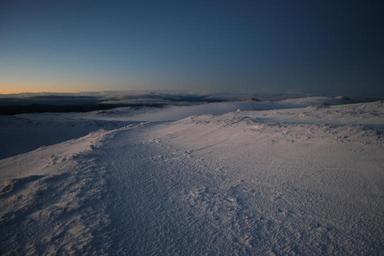Introduction
Linocut printing, a captivating type of relief printmaking, has actually been welcomed by artists for its unique capability to convey feeling and story through simple yet effective images. This age-old method, rooted in the tradition of woodblock printing, offers a platform for self-expression in art that resonates with contemporary themes such as identity in art and emotional reflection in art. Whether you are a hopeful artist or a skilled expert, understanding the essentials of linocut printing strategies can raise your creative practice and improve your portfolio with dynamic color structures and thought-provoking imagery.
In this extensive guide, we will explore different aspects of linocut printing strategies while linking them to more comprehensive themes in visual art. We'll delve into the materials needed, step-by-step processes, and creative options that affect the outcome of your prints. Furthermore, we'll talk about how linocut prints can act as impactful decor components within home interior decoration and as part of diverse art collections.
What is Linocut Printing?
Linocut printing methods include carving styles into a soft linoleum block which is then inked and pressed onto paper or fabric to develop prints. The process marries workmanship with creativity, allowing artists to produce numerous copies of their initial styles.
The History Behind Linocut Printing
Linocut printing emerged in the early 20th century as a more accessible alternative to standard woodblock printing techniques. Artists like Pablo Picasso and German expressionists embraced this method to explore https://postheaven.net/fotlanfsrj/choosing-the-right-size-for-your-nature-inspired-wall-pieces new creative expressions. Its roots extend back centuries however have progressed significantly over time.
Why Select Linocut?
The appeal of linocut depends on its versatility and the tactile quality it gives artworks. Artists can try out texture and depth while producing vibrant portraits or abstract wall art that captures audiences' attention.
Understanding the Fundamentals of Linocut Printing Techniques
When approaching linocut printing, it's important to understand its fundamental methods. This consists of understanding the tools, materials, and methods utilized throughout the process.
Tools Required for Linocutting
Linoleum Block: The main substrate on which you carve. Carving Tools: These consist of various v-tools and gouges for comprehensive carving. Brayer: A roller used for spreading ink uniformly on the block. Ink: Unique relief inks created for printmaking. Paper: Top quality printmaking paper is perfect for achieving lively colors. Baren or Press: To apply even pressure when moving ink from block to paper.Step-by-Step Process
Design Your Image: Start by designing your concepts on paper before transferring them onto your linoleum block. Transfer Your Design: You can either draw straight onto the block or usage carbon transfer paper. Carve Your Block: Utilize your sculpting tools to remove locations that you do not want to print; bear in mind that what stays will be inked. Inking Your Block: Roll out your ink with a brayer up until it's smooth before applying it to your carved block evenly. Printing Your Design: Put your paper over the tattooed block and press down firmly utilizing a baren or press. Drying: Allow your prints to dry entirely before dealing with them.Exploring Creative Options in Linocut Printing
Every artist who utilizes linocut printing need to make numerous important creative options that will define their work's visual qualities in art.
Choice of Color Palette
Choosing a color combination is among the most substantial choices an artist makes throughout their innovative process. For instance, vibrant colors can evoke feelings associated with happy moments captured in photography or vibrant abstract pictures while muted tones may show reflective photography styles.
Experimentation with Styles
As you dive much deeper into linocutting, think about explore various picture styles-- such as faceless portraits or big canvases-- to enhance self-expression in art.

Connecting Linocut Prints to Home Design
Linocuts can transform daily areas into galleries filled with personality-- a testament to visual storytelling through ornamental art prints.
Integrating Prints into Interior Design Concepts
- Gallery Wall Inspiration: Curate a collection of framed photography together with strong linoprints for an eclectic look. Stylish Wall Decor: Big canvases including vibrant pictures can work as statement pieces within modern-day home decor setups. Personalized Art Displays: Create custom-made wall art plans that reflect personal stories tied to identity in art.
The Function of Photography Techniques in Printmaking
While primarily concentrated on printmaking strategies, incorporating photography ideas-- like recording minutes in photography-- can enrich your understanding and execution of linoprint artwork.
Merging Photography with Linoprinting
Consider utilizing photos as referrals for producing intricate designs on your linoleum blocks-- this mix allows for unique interpretations by translating photographic details into graphic forms.
FAQs About Linocut Printing Techniques
What products do I require for linocutting?- You will require a linoleum block, sculpting tools, ink, brayer, high-quality printmaking paper, and optionally a baren or press.
- No! Regular paint will not adhere correctly nor produce tidy impressions like specialized relief inks created for this purpose.
- Drying times differ depending upon humidity however generally take 24 hr; ensure they're flat throughout this period!
- Yes! You can produce several layers by cleaning your block between colors or carving different blocks for each color-- a strategy known as decrease printing.
- Not at all! While previous experience assists get comfy rapidly, anyone going to learn will discover delight in exploring this technique.
- Absolutely! Framing not just protects but also boosts their presentation as part of home aesthetics.
Conclusion
Understanding the essentials of linocut printing techniques opens doors not just within standard printmaking but likewise welcomes unlimited possibilities within modern artistic expression-- from ornamental wall hangings that raise home design aesthetic appeals to thoughtful pieces reflecting identity in art through self-expression techniques like self-portrait photography integrated with abstract portraits created from sculpted blocks.
This dynamic interplay between workmanship and imagination serves both as a psychological reflection in art while inviting viewers into stories woven through each layer printed upon canvas or paper-- a true testament to what makes fine art photography so engaging today!

By exploring these complexities further within our world today-- from capturing moments through visual photography styles down into how we utilize these images within our living spaces-- we come more detailed together through shared experiences expressed through artistry across different mediums!